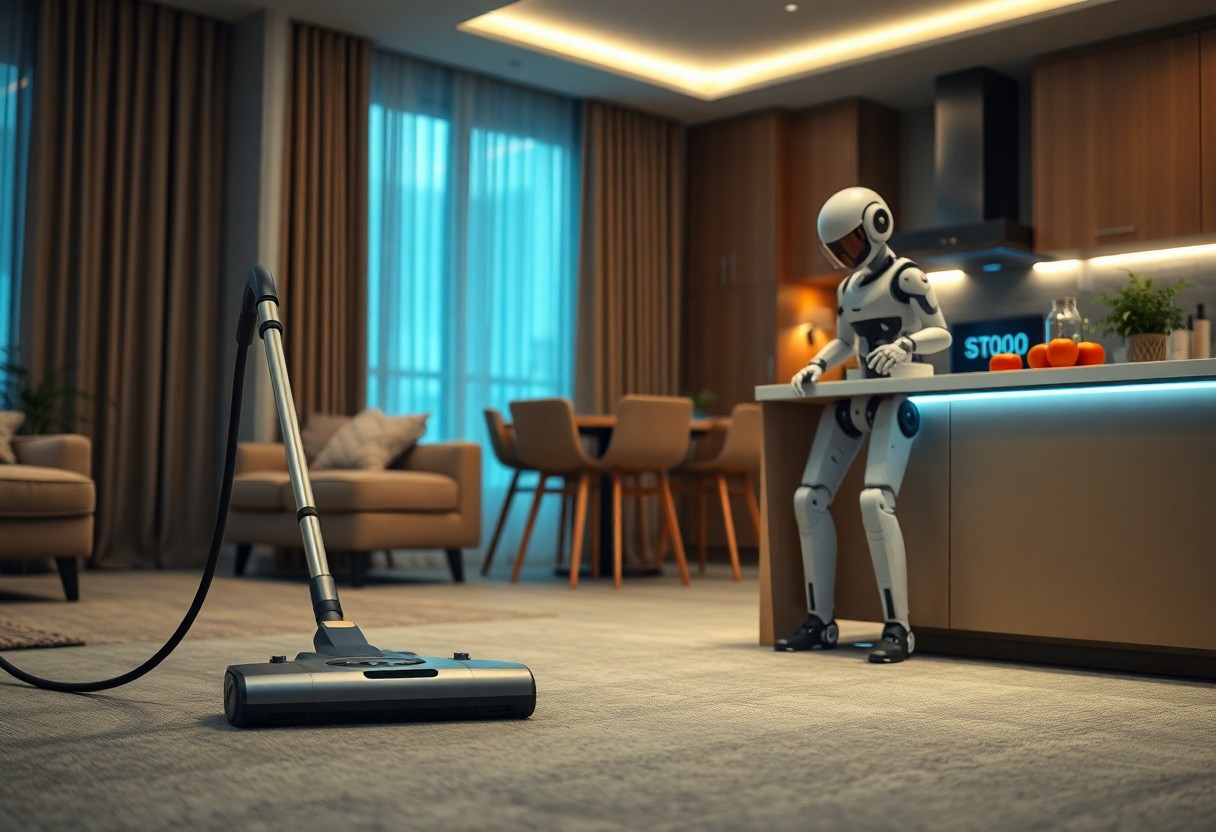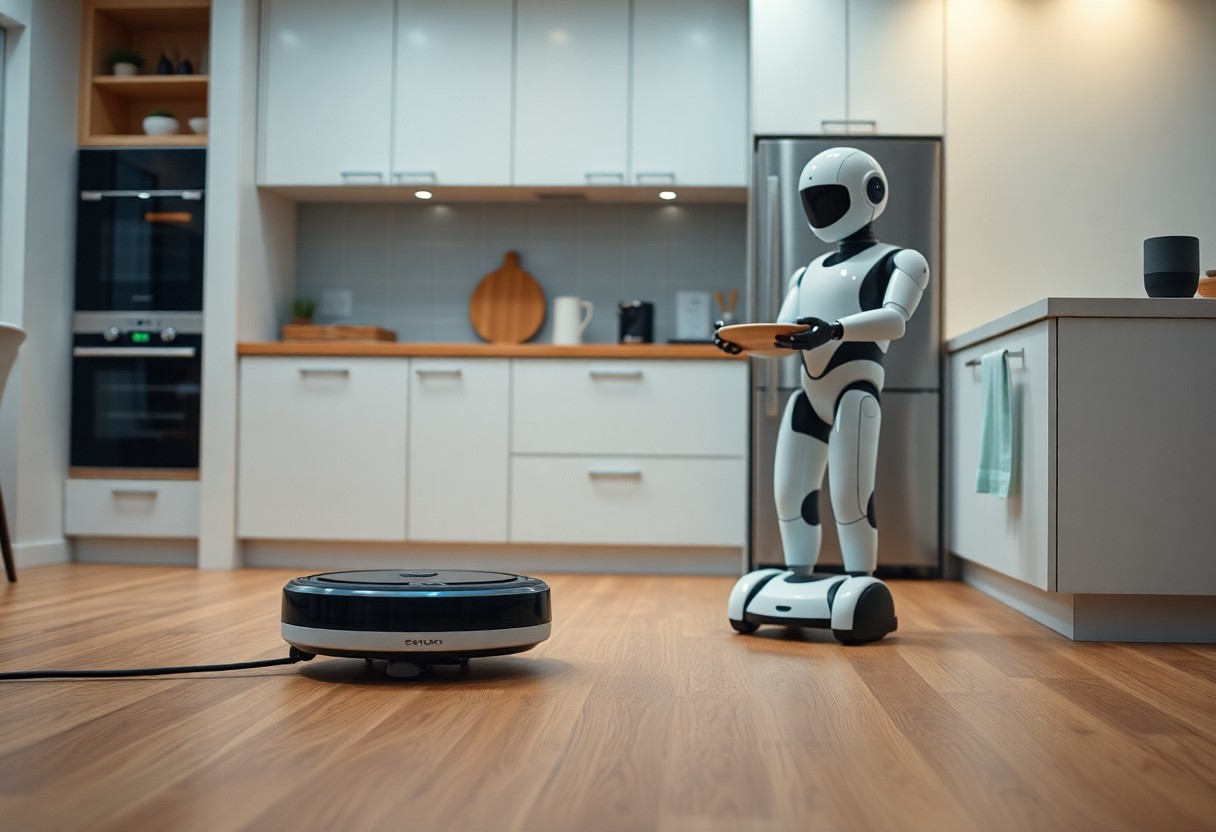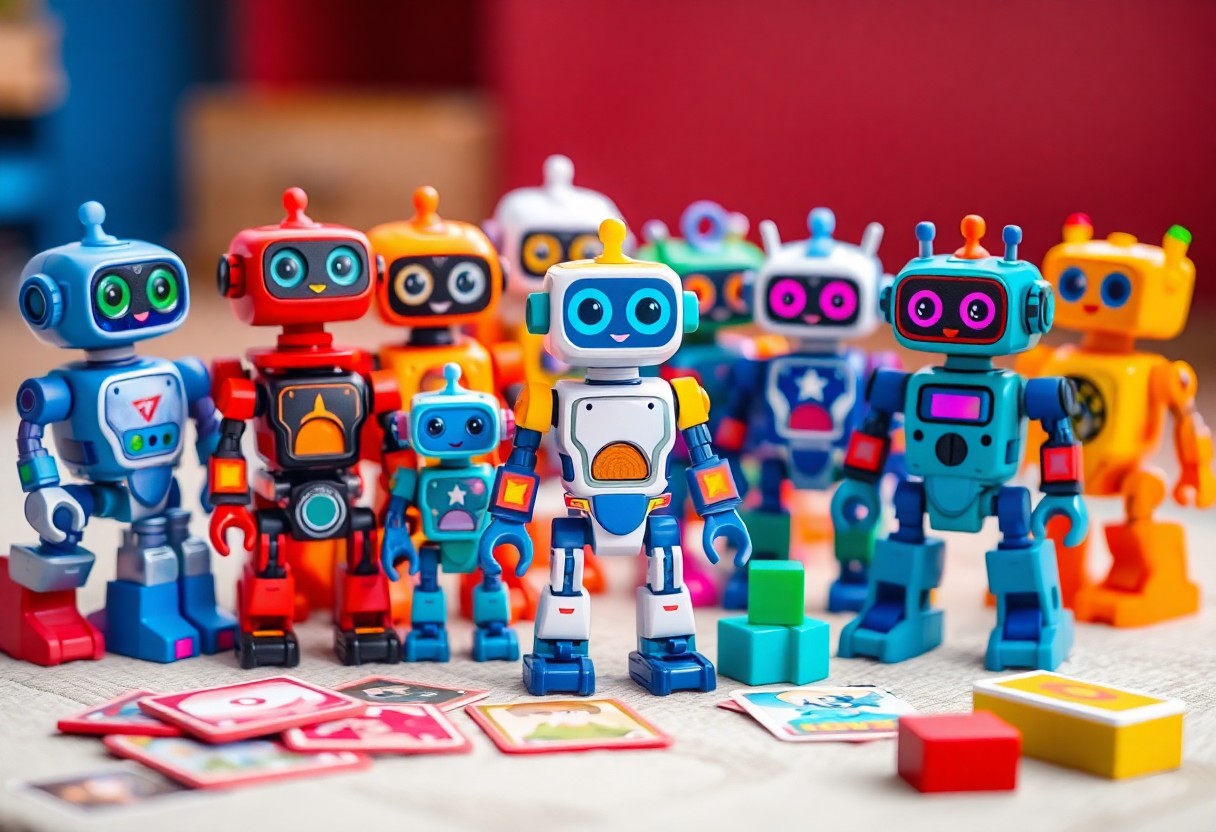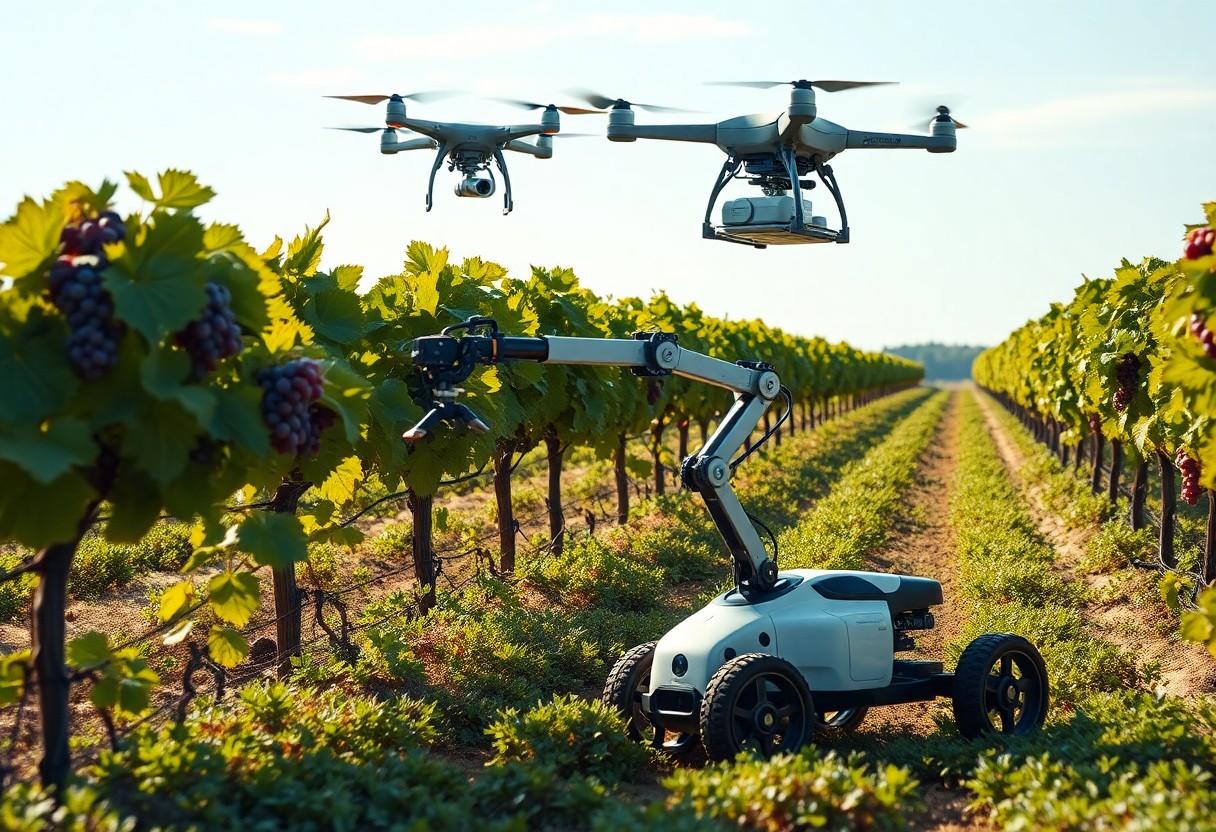Just imagine a home where mundane tasks are effortlessly managed by intelligent robots, allowing you to focus on what truly matters. In this evolving landscape of household technology, robots are transforming daily chores – from precision-vacuuming every corner to expertly preparing your meals. As you explore the capabilities of these smart devices, you’ll discover how they can enhance your lifestyle, optimize efficiency, and create a more integrated living environment. Welcome to the future of your smart home.

The Evolution of Household Robotics
Household robotics has transformed dramatically over the past few decades, evolving from basic machines to sophisticated, interconnected devices. Initially limited to simple tasks, such as vacuuming or yard maintenance, these robots now boast advanced AI and machine learning capabilities, enabling them to learn your preferences and adapt to your lifestyle. The integration of smart technology has paved the way for seamless communication between devices, making your home more efficient and user-friendly. As technology continues to advance, the possibilities for household robots expand, offering even greater convenience and support in everyday life.
Milestones in Robot Technology
Key milestones mark the journey of robot technology, significantly impacting household applications. In 1996, the first home robot vacuum, the Electrolux Trilobite, made waves, paving the way for modern models. The introduction of the Roomba in 2002 revolutionized automated cleaning, while subsequent advancements in sensors and navigation technology have enabled robots to maneuver through complex environments. By 2015, intelligent assistants like Amazon Echo entered homes, demonstrating how voice control and connectivity could enhance robot functionality.
The Rise of Smart Home Integration
Smart home integration has redefined how you interact with household robots, allowing for smarter, more coordinated efforts among devices. This trend surged with the development of platforms like Google Home and Apple HomeKit, which enable seamless connections between various smart devices. You can now control your vacuum cleaner, thermostat, and lighting using a single app or voice commands. This interconnectedness leads not only to enhanced efficiency but also to greater customization, as robots learn from your routines and preferences.
As smart home technology progresses, integration continues to deepen, making it easier for your household robots to communicate and collaborate. Imagine a scenario where your cooking assistant recognizes that you’re home and adjusts the oven temperature while your vacuum cleaner makes sure the kitchen is tidy before dinner. These advancements minimize your effort, creating a harmonious living environment where your technology works together seamlessly. This integration further enhances the user experience, ensuring that each device contributes to your overall comfort and efficiency at home.
Vacuum Cleaners: From Manual to Autonomous
The evolution of vacuum cleaners has significantly reshaped household cleaning. From heavy manual models requiring substantial effort to the sleek, autonomous robots of today, this shift enhances convenience and efficiency. You can now enjoy more leisure time while robots expertly navigate your home, ensuring spotless floors with minimal input. As these devices integrate advanced sensors and artificial intelligence, the future of cleaning becomes increasingly hands-free, allowing you to focus on what matters most.
The Transition to Smart Vacuum Technology
The leap to smart vacuum technology means you can now benefit from autonomous devices that learn your cleaning habits. These advanced vacuums employ navigation systems like LiDAR or cameras, mapping your home for optimal cleaning routes. They can be programmed via smartphone apps, enabling you to set cleaning schedules, monitor progress, and even control your vacuum remotely. This transition not only simplifies your cleaning routine but also enhances overall performance.
Assessing the Efficiency of Robotic Vacuums
Efficiency in robotic vacuums is measured through factors such as battery life, suction power, and navigation capabilities. With advanced sensors, many of these vacuums provide thorough cleaning, even in complex layouts. Assessing how well they handle various surfaces—like carpets versus hard floors—and their ability to avoid obstacles reveals their effectiveness.
When considering the efficiency of robotic vacuums, you should examine metrics like cleaning time, coverage area, and the size of the dust bin. Top models can clean up to 1,500 square feet on a single charge and navigate from room to room with minimal human intervention. Some can even return to their charging stations autonomously, ensuring continuous performance. Studies show that high-quality robotic vacuums can remove more than 90% of dirt, dust, and pet hair, rivaling traditional vacuum cleaners. Factors such as the device’s ability to maintain suction power over time and effective filtration systems also play critical roles in their overall cleaning efficiency.
Cooking Companions: The Future of Kitchen Robots
As your kitchen evolves into a smart hub, robotic cooking assistants are transforming the culinary landscape. These innovative appliances not only automate meal preparation but also offer personalized recipe suggestions based on your tastes and dietary needs. By integrating artificial intelligence, these robots can learn from your cooking habits and even synchronize with your other smart home devices. Explore more about this exciting technology in Unveiling the Future: 20 Types of Domestic Robots.
How Cooking Assistants Enhance Culinary Experience
Cooking assistants empower you to elevate your culinary skills effortlessly. They provide precise measurements, adjust cooking times, and offer real-time feedback, ensuring consistently delicious results. By taking care of mundane tasks like chopping and stirring, these robots free up your time, allowing you to focus on creativity and presentation. With integrated recipe suggestions and smart ingredient tracking, meal prep becomes an enjoyable and stress-free experience.
Critiques of Robotic Chefs in Everyday Use
Despite the convenience of robotic chefs, critiques often center on cost, reliability, and adaptability. Many consumers find the upfront investment substantial, and operating these complex machines can sometimes lead to technical hiccups during meal preparation. Additionally, robotic chefs may struggle with diverse cuisines or intricate techniques, limiting their versatility in the kitchen.
Feedback from users indicates that while robotic chefs excel at basic tasks, they can encounter challenges with more sophisticated recipes requiring nuanced techniques or adjustments based on ingredient quality. Furthermore, their relatively high price point raises questions about long-term value, especially if you already own an array of kitchen gadgets. Preferences for personal touch and culinary intuition also influence opinions, as many home cooks value the experience of hands-on cooking over automation. Balancing convenience with culinary authenticity remains a key discussion point among cooking enthusiasts.
Beyond Cleaning and Cooking: The Expanding Roles of Household Robots
Household robots have emerged as multifunctional devices, extending far beyond their initial roles in cleaning and cooking. You can now integrate robots into your daily life for a variety of tasks, including security, companionship, and even healthcare support. As technology advances, these machines promise to enhance your home’s safety, provide emotional support, and improve your overall well-being.
Security Systems and Surveillance Drones
Modern household robots are redefining home security with advanced surveillance capabilities. Equipped with high-definition cameras and real-time monitoring features, these devices detect unusual activities and send alerts directly to your smartphone. Companies like Ring and Arlo lead the market, offering drones that patrol your property, providing peace of mind and deterring potential intruders.
Therapeutic and Companion Robots
Therapeutic and companion robots are making significant strides in providing emotional support and mental health care. Robots such as Paro, a robotic seal, have shown effectiveness in assisting the elderly, reducing feelings of loneliness and anxiety. These companions engage users through interactive dialogue and comforting physical presence, demonstrating that technology can profoundly impact emotional well-being.
Research has indicated that companion robots can lead to measurable improvements in mood and social interaction, particularly among seniors. The ability of these robots to engage with users through touch and conversation often enhances cognitive functions and combats isolation. As the demand for emotional support grows, innovations in robotic designs enable deeper connections, making these technologies vital tools in modern caregiving and companionship.
Navigating the Costs: Financial Implications of Robot Adoption
Adopting household robots involves various financial considerations that can significantly impact your budget. Initial costs range from a few hundred to several thousand dollars, depending on the robot’s capabilities and advanced features. As you weigh these investments, it’s necessary to evaluate how these costs align with potential savings in time, energy consumption, and reduced labor costs, especially when assessing the long-term value of automation in your home.
Initial Investment vs. Long-Term Savings
While the upfront price of household robots might seem steep, they offer substantial long-term savings. For instance, a robot vacuum cleaner can reduce the frequency of hiring professional cleaners, helping you divert those funds elsewhere. Over time, the cumulative savings in cleaning supplies and labor can not only offset the initial investment but also enhance your overall financial health.
Economic Impact on Traditional Household Responsibilities
The introduction of robots into homes alters traditional household roles, shifting responsibilities from family members to automated systems. This transition often means fewer hours spent on mundane tasks, freeing you to focus on activities that build relationships or enhance personal well-being. In many cases, this shift leads to a reallocation of household budgets, allowing for investment in additional technologies or services that promote a higher quality of life.
The economic impact of household robots extends beyond merely replacing tasks; it transforms the dynamics of domestic responsibilities. For example, as robots handle regular cleaning and meal preparation, family members can engage in additional pursuits or allocate time to education and self-improvement. This shift can lead to enhanced family bonding and leisure activities, while also fostering a culture where technology becomes an integral part of daily routines. As robots become commonplace, you may notice increased productivity not just in household chores, but across various facets of your life.
To wrap up
To wrap up, embracing household robots transforms your daily routines, making tasks like vacuuming and cooking more efficient. As technology evolves, these smart home devices enhance convenience, allowing you to focus on what truly matters. You can expect continual advancements that integrate seamlessly into your lifestyle, thereby redefining home management. By incorporating these innovations, you’ll experience a future where your home works for you, simplifying chores and enhancing your daily quality of life.







